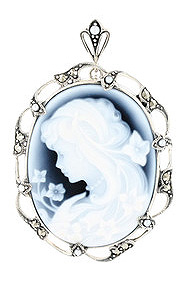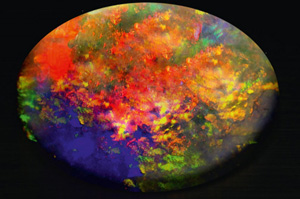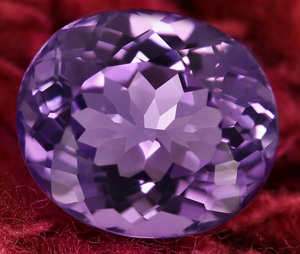Magic and mystery: the fascinating world of gemstones. Gemstones play a role in our everyday lives, although we are often not so aware of them. I have a lot of friends who are not interested in precious stones and some friends who do not even wear jewellery (yes, they exist!), but everyone knows certain gemstones at least by name from the stories and myths surrounded in popular stories and myths.

Portrait Pendant from Rocks & Co.
Since our childhood …
Gemstones a part of our everyday life? What is that supposed to mean? Gemstones are often found in narratives and novels, and as such we are surrounded by their stories much more than one thinks. It is not surprising gems are so often featured as precious stones and jewels embody not only beauty, but also wealth, and these elements are very suitable for dramatic story lines and pots!
Since our childhood, precious stones have appeared in stories and novels such as “Ali Baba and the 40 Raiders” or “Treasure Island”. Who did not despair until D’Artagnan finally returned to France with the Queen’s diamonds? Or who didn’t love long bead chain of Daisy Buchanan in “The Great Gatsby”?
There are so many novels from different eras, in which precious stones play a role. I always remember the well-loved novel “100 years of solitude” by the great Gabriel García Márquez. One of the figures, Melchiades, had a ring with a huge Black Opal.
Gemstones are often used for symbolism in many myths and legends. There is an ancient Arab legend that tells us that a very normal stone liked to dress up as a gem, it wanted to be special. It dressed as an Emerald, Ruby or Aquamarine and was so good at pretending to be a gem that nobody noticed it was all a disguise. One day a child came and played with the stone, and after a while threw the stone away. The stone broke as it fell to the ground and inside the stone a Diamond was revealed. The moral of the story is that it’s what’s on the inside that is important and not how you appear on the outside.

Black Opal
The language of gemstones
Gemstones can even write encrypted messages! In the first half of the 19th century “emotional” jewellery was very fashionable in England. This was the kind of jewellery to be given to a loved one – usually a forbidden love! Medallions or cameos were decorated with a series of precious stones arrange in a kind of language of gems. For example, the world ‘love’ would be spelt with Lapis Lazuli, an Opal, a Vermeil (now known as red Garnet), and an Emerald, the word ‘dearest’ needed Diamond, Emerald, Ruby, another Emerald, a Sapphire and a Topaz. The word ‘dearest’ in ciphered gemstones was found in a medallion of King George IV of England when he died. The medallion-hidden under his shirt-guarded a miniature portrait of Mrs. Fitsherbert, his long-time lover!

Amethyst
The legend of onions
Do you know the legend of onions? Even though it seems impossible this story is actually about gemstones!
There was once a very nice vegetable garden where beautiful and rare onions grew, these onions were not found anywhere else. These onions were all different colours and in the heart of each lay a gemstone. Some contained a Ruby, others Sapphires, Emeralds, or Amethysts, and depending on what a precious stone rested in their heart, the onions also displayed that corresponding colour on the outside. But the other vegetables began to talk “It’s not fair that these onions have such colours!” they said, getting louder and louder. “We don’t to share our garden with these onions, they must be bad onions!” And so the onions began to feel ashamed. They tried to cover their colours with several layers until they looked like normal onions. One day an old man came to the vegetable garden, when he saw the onions he asked why they had grown so big. The onions told him about their suffering, each onion had its own story, some of them could not even remember the true colour of their hearts. The old man was so touched by their stories that he began to cry, and ever since then cutting an onion has made us cry. Isn’t that a beautiful story?
Shop for your very own piece of gemstone jewellery at Rocks & Co. >






